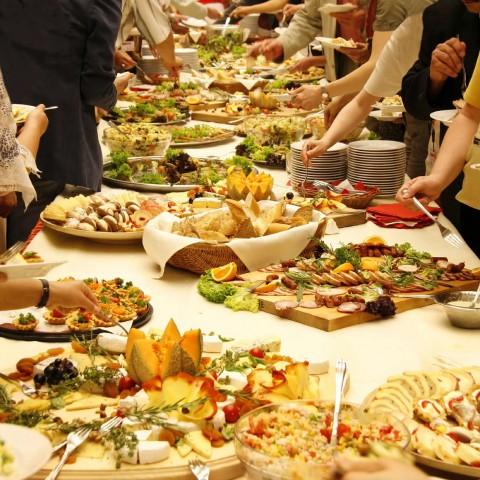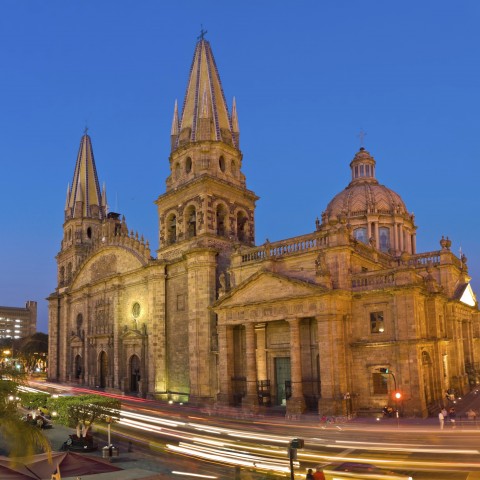In the very Catholic Mexico, many celebrate the religious holiday known as Candlemas (or Dia de la Candelaria in Spanish). By learning about this holiday, you’re also immersing yourself in one of the most important aspects of Mexican culture: its people’s religious beliefs, and how they’re expressed through celebration.
So, what is Candlemas Day in Mexico? What are the most common Mexican holidays and traditions surrounding this holiday? Learn more about the significance of the Nativity scene in this holiday and more, with SpanishPod101.com.
1. What is Spanish Candlemas?
Candlemas in Mexico may be best known as the day that Mexicans finally take down the Nativity scene that they put up before Christmas. This is a very religious holiday, and is also known as the day of the “Presentation of Jesus at the Temple.”
This name takes root in the biblical book of Luke, and also commemorates the cleansing of the Blessed Virgin Mary. According to Jewish custom, a woman must be cleansed about a month after giving birth and so Candlemas is thought to be the approximate time Mary would have done so.
2. When is it?
Mexicans celebrate Candlemas forty days after Christmas, February 2, each year.
3. How is it Celebrated?
On Dia de la Candelaria, Mexicans take down the Nativity scene that they set up before Christmas. Further, many people will dress up figures of the baby Jesus to be blessed once at the iglesia, or “church.” This blessed figurine Jesus is then placed somewhere to dwell for the rest of the year, sometimes with a family who’s then expected to open their home to any visitors for that period of time.
Another common tradition is the gathering of family and friends to feast together, particularly on tamals, or “tamales.” During this fiesta, or “party,” many Mexicans also make a special bread called rosca, which is shaped like a wreath and contains a figurine of the baby Jesus baked inside of it. A fun tradition centering on this is that the person who finds this figurine is the one to dress the Baby Jesus that will be blessed.
Sometimes this Baby Jesus is a relic possessed by the family for many generations, making it a very sentimental aspect of the holiday. However, other families go out and buy a new one if they don’t already have one. Regardless of how long this Baby Jesus figurine has been in the family for, its blessing at the church is one of the most important things that will happen all year and is greatly relished by the family as a whole.
While feasting, they also like to drink something called atole, which has a corn base and is typically served hot or warm. This beverage is certainly fitting to the comfort and warmth that Dia de la Candelaria holds.
There are some places in Mexico that really go all out with Candlemas celebrations, complete with bull fights and special parades to enjoy.
4. Additional Information
The Nativity scene, or in Spanish Nacimiento, is a representation of Jesus Christ’s birth. They’re always set up prior to Christmas, traditionally on December 8, according to the celebration of the Conception; they stay up until February 2, the day of Candlemas.
Under the Mexican tradition, Nativity scenes represent Mary and Joseph with clay figures in a manger or a “stable,” or establo, joined by a “mule,” or mula, and an “ox,” or toro. The scene can also include other figures to adore the Christ child, such as “shepherds,” or pastores, “angels,” or ángeles, and the “star of Bethlehem,” or estrella de Belén.
There are Nativity scenes of all shapes and sizes. Some people put up extravagant ones, with cascades, rivers, lakes where ducks swim, shepherds and their flocks of sheep, and many other characters who attend to offer gifts to Baby Jesus. These gifts often include pots, hens, vegetables, and fruits.
Some of these Nativity scenes are mobile, where the figures are moved around from day to day according to what happens in the biblical events; shepherds are moved, and the “Three Wise Men,” or Tres Reyes Magos, draw near the manger as the Epiphany draws near.
5. Must-know Vocab for Candelario in Mexico
Finally, once Candlemas arrives, these Nativity scenes are taken down to make way for the Candlemas celebrations!
Here’s some vocabulary you should know to celebrate Mexican Candlemas Day to its fullest! Be sure to study these in order to improve your Spanish vocabulary and pronunciation.
- febrero — “February”
- bebé — “baby”
- madre — “mother”
- vela — “candle”
- iglesia — “church”
- atole — “atole” (a drink served in Mexico, usually served hot or warm, with a corn base)
- Virgen María — “Virgin Mary”
- tamal — “tamal”
- fiesta — “party”
- Candelaria — “Candlemas”
- rosca — “rosca” (a type of bread shaped like a wreath, with a baby figurine inside of it and candied fruit on top)
To hear the pronunciation of each word as well, be sure to check out our Spanish Candlemas vocabulary list. Each word is accompanied by an audio file with the word’s pronunciation.
Conclusion
You’ve learned a lot about how Mexicans celebrate Dia de la Candelaria, particularly the significance of the Nativity scene and the blessing of the Baby Jesus figurine.
Do you celebrate Candlemas in your home country, or a holiday like it? Let us know in the comments!
To learn more about Mexican holidays and traditions, and its culture in general, visit us at SpanishPod101.com. We offer an array of vocabulary lists and blog posts, and we even host an online community where you can discuss topics you’re learning with fellow students. And if you want a more one-on-one approach to your learning, you can download our MyTeacher app!
Make your account today and start learning Spanish efficiently and with a flair of fun!














